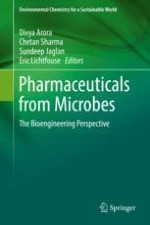This book has been assembled with the hope of being an authoritative, comprehensive, conceptually sound and highly informative compilation of recent advances describing the concepts of bioengineering in the field of microbiology. It comprises of seven chapters written by eminent authors in their respective fields. Topics included deal with the significant advancement of microbial technology with emphasis on drug delivery strategies for healthcare products, vaccine delivery, biotransformation approaches to generate new molecules, upstream/downstream processing of biopharmaceuticals. It serves as excellent reference material for researchers, students and academicians in the fields of biotechnology, microbiology and pharmaceutical sciences.
